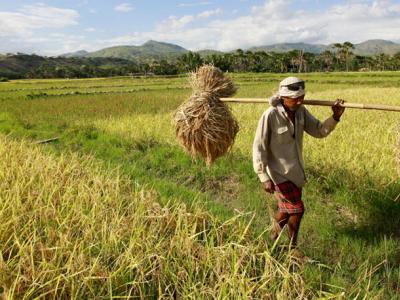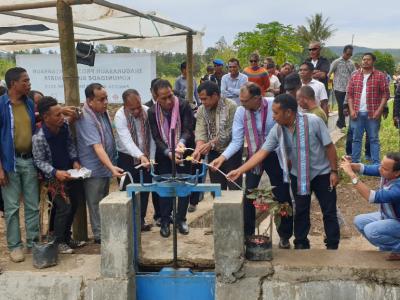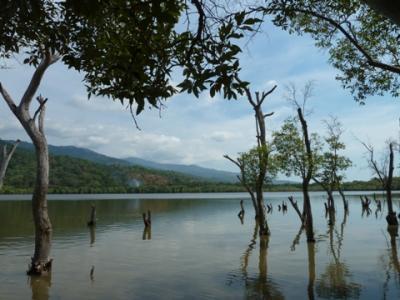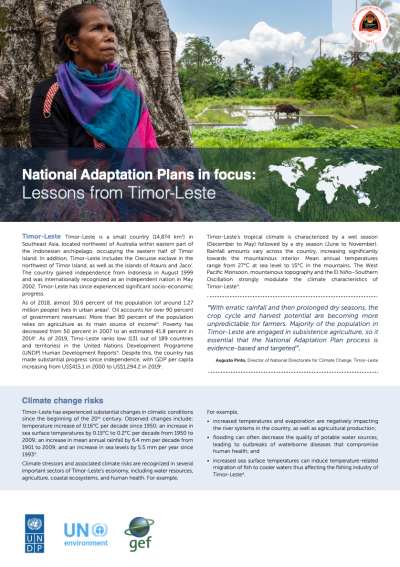Timor-Leste is the smallest country in the region of East and Southeast Asia both geographically—with a total area of less than 15,000 kilometers—as well as in regards to population—with less than 1.2 million people (CIA, 2011). Since achieving independence in May 2002 following civil unrest in the late 1990s, the country has focused on rebuilding its infrastructure and economy. Its Human Development Index ranking of 120 out of 169 (UNDP, 2010) is near the lower end of the region, but Timor-Leste has made strides in recent years. Still, it remains classified as one of the least developed countries in the world. Currently, there is little data concerning the impacts of climate change on Timor-Leste. As such, Timor-Leste does not yet have a formal climate change adaptation strategy. Informal efforts such as agricultural education, however, are beginning to emerge. Timor-Leste has a hot and humid tropical climate (CIA 2009). The mean temperature in Timor-Leste is approximately 24 degrees Celsius (Government of Timor-Leste 2004). Average rainfall in Timor-Leste is approximately 1500 mm per year (Government of Timor-Leste 2004). The country is defined by a wet season from November to May and a dry season from June to October (Government of Timor-Leste 2004). Timor-Leste is subject to floods, tsunamis and tropical cyclones which could potentially be exacerbated by the effects of climate change (CIA 2009). Poor farming techniques have led to extensive deforestation and soil erosion (CIA 2009). Two-thirds to three-quarters of Timor-Leste’s population rely on subsistence agriculture to survive (MFAT 2009). As a result, the population is vulnerable to shocks such as floods, droughts and crop failures (MFAT 2009). Unseasonably heavy rain in 2003, for example, resulted in flooding, crop damage and severe food shortages (MFAT 2009). Rising sea levels also threaten coastal areas including the capital, Dili, which is only several meters above sea level. Consequently, extreme weather events associated with climate change pose a significant challenge to the livelihoods of those residing in Timor-Leste (CIA - The World Factbook. 2009. Timor-Leste).
Active Projects
Projects Completed
Latest Updates
See allLatest Publications
See allThis NAP in focus country briefing on the process to formulate and implement National Adaptation Plans in Timor-Leste considers firstly the…









